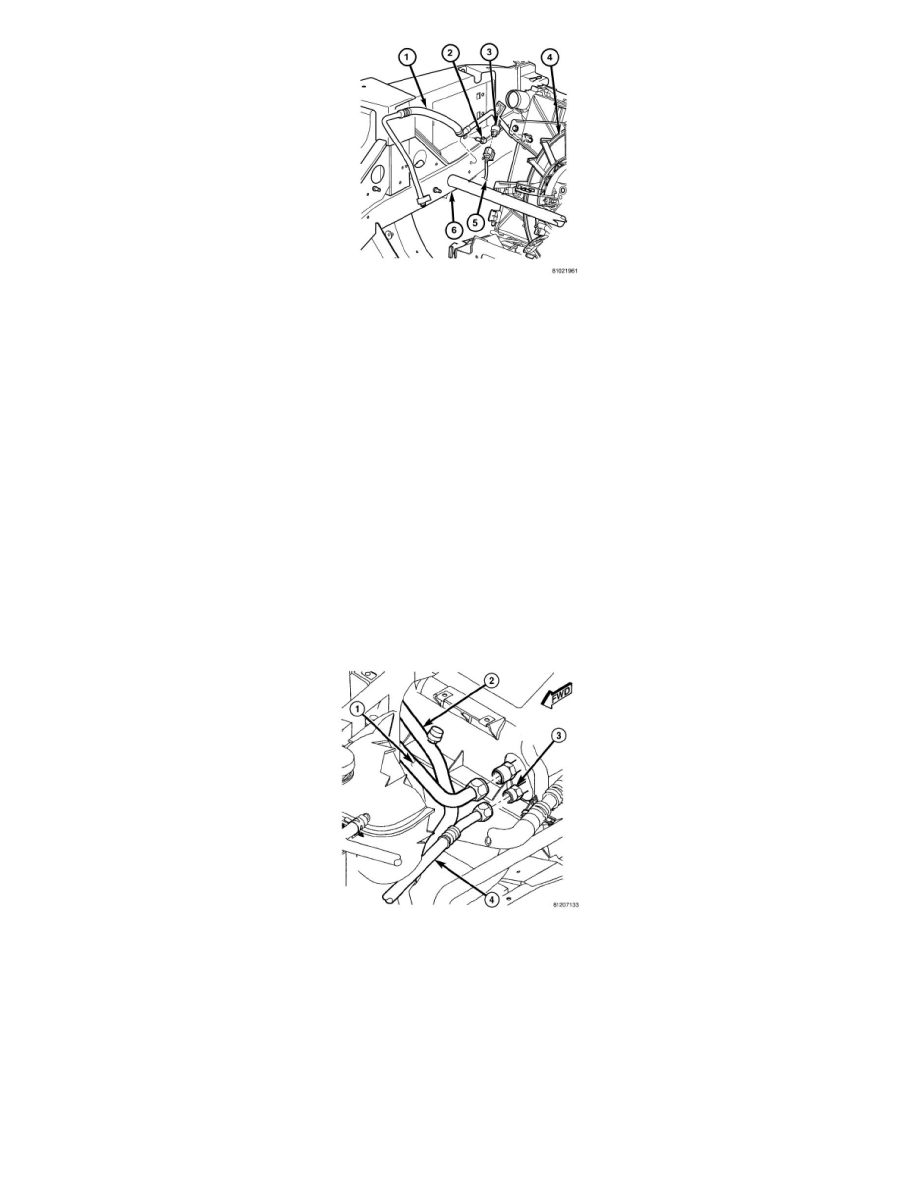Viper SRT-10 V10-8.4L (2008)

8. Install the bolt (2) that secures the A/C discharge (1) to the left frame rail (6). Tighten the bolt securely.
9. If removed, install the A/C pressure transducer (3) onto the A/C discharge line using a new O-ring seal. Tighten the transducer securely.
10. Connect the wire harness connector (5) to the A/C pressure transducer.
11. Install the air intake ducts to the front of the air cleaner assembly .
12. Reconnect the negative battery cable.
13. Evacuate the refrigerant system See: Heating and Air Conditioning/Service and Repair/Refrigerant System Evacuate.
14. Adjust the refrigerant oil level See: Heating and Air Conditioning/Service and Repair/Refrigerant Oil Level.
15. Charge the refrigerant systemSee: Heating and Air Conditioning/Service and Repair/Refrigerant System Charge.
Liquid Line
INSTALLATION
CAUTION: Be certain to adjust the refrigerant oil level when servicing the A/C refrigerant system See: Heating and Air Conditioning/Service
and Repair/Refrigerant Oil Level. Failure to properly adjust the refrigerant oil level will prevent the A/C system from operating as designed
and can cause serious A/C compressor damage.
NOTE: When replacing multiple A/C system components, refer to the Refrigerant Oil Capacities chart to determine how much oil should be
added to the refrigerant systemSee: Heating and Air Conditioning/Service and Repair/Refrigerant Oil Level.
NOTE: Replacement of the refrigerant line O-ring seals is required anytime a refrigerant line is disconnected. Failure to replace the rubber
O-ring seals could result in a refrigerant system leak.
1. Position the A/C liquid line (4) into the engine compartment.
2. Remove the tape or plugs from the opened liquid line fittings and the condenser and evaporator ports.
3. Lubricate new rubber O-ring seals with clean refrigerant oil and install them onto the liquid line fittings. Use only the specified O-ring seals as they
are made of a special material for the R-134a system. Use only refrigerant oil of the type recommended for the A/C compressor in the vehicle.
4. Connect the A/C liquid line to the A/C evaporator (3).
5. Tighten the nut that secures the liquid line to the A/C evaporator. Tighten the nut to 13.5 Nm (10 ft. lbs.).
